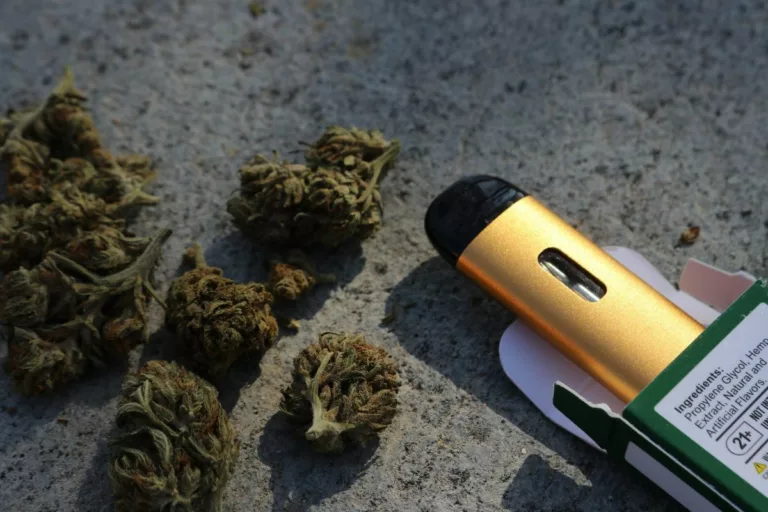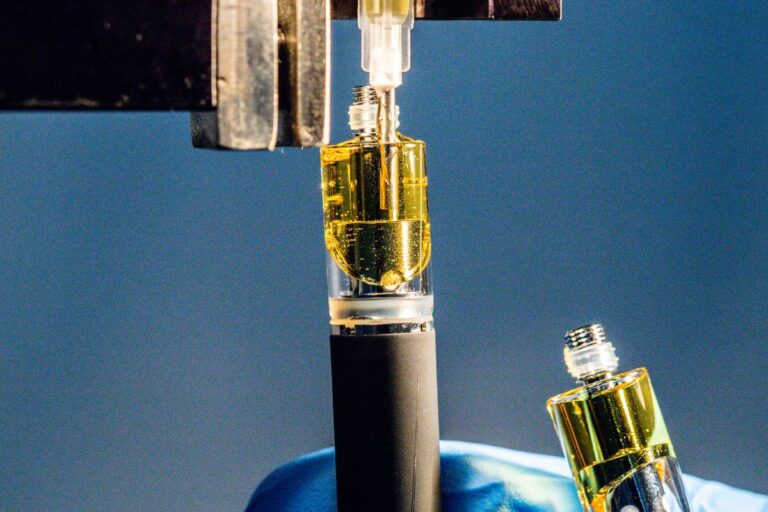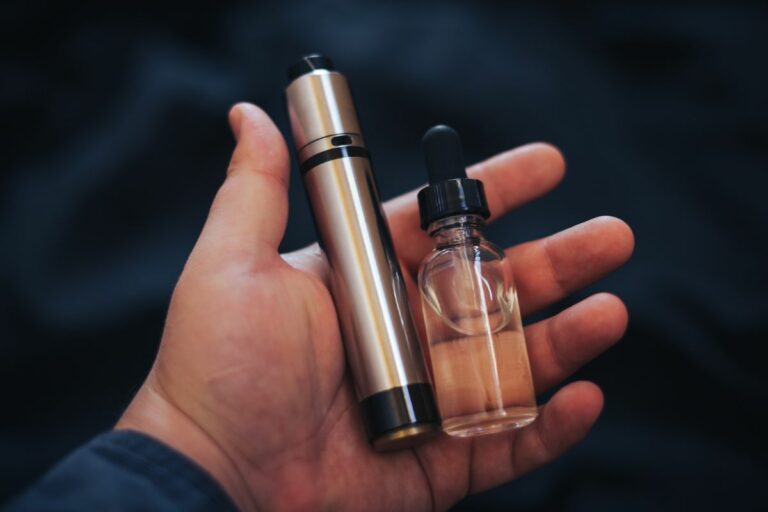Can Dentists Tell If You Vape? Breaking Down the Facts
Vaping has gained popularity among people trying to quit smoking or looking for a supposedly less harmful alternative to traditional cigarettes. However, there are still concerns about the impact of vaping on one’s oral health. Dental professionals may be able to identify signs of vaping, as it can affect the mouth and teeth in distinctive ways.
A study found that switching from smoking to vaping could lead to an increase in bleeding on probing (BOP) and gingival crevicular fluid (GCF) volume in a short period. This suggests that certain oral health indicators may point toward vaping habits. Additionally, the ingredients in e-cigarettes, such as nicotine and various chemicals, can potentially contribute to gum inflammation and other dental issues.
Understanding the relationship between vaping and oral health can help individuals make informed decisions regarding their habits. Dentists and dental hygienists play a crucial role in detecting signs of vaping in their patients and advising on proper care to maintain a healthy mouth.
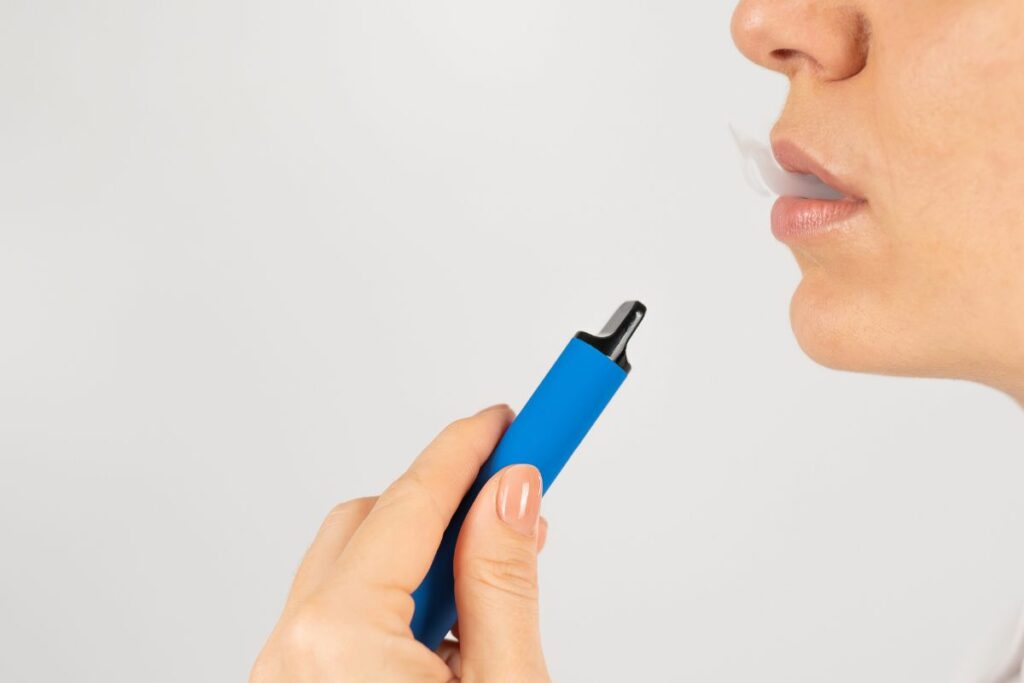
Table of Contents
Understanding Vaping and E-Cigarettes
Vaping is the act of inhaling and exhaling aerosol, commonly referred to as vapor, produced by an e-cigarette or similar device. E-cigarettes are handheld, battery-powered devices that heat a liquid solution, commonly known as e-liquid, and convert it into vapor that users can inhale. The e-liquid typically contains nicotine, propylene glycol, vegetable glycerin, and various flavors.
One key aspect of e-cigarettes is the wide variety of flavors available, ranging from traditional tobacco and menthol to more exotic and sweet options. Combined with the appealing technological aspects of vaping devices, these flavors make vaping particularly attractive to some users. Many users also appreciate the absence of smoke, as the vapor of e-cigarettes generally produces a less pungent smell compared to traditional combustible tobacco products.
E-liquids contain varying levels of nicotine, the primary addictive substance found in traditional cigarettes. Users can choose e-liquids with different nicotine concentrations, allowing them to gradually reduce their nicotine intake over time, if desired. Some e-liquid options even contain no nicotine at all, catering to users who prefer to vape for the flavors and sensation without the addictive component.
Another important component of e-cigarettes is the use of propylene glycol (PG) and vegetable glycerin (VG). Both PG and VG are common food additives and are considered safe for ingestion by the FDA. In e-liquids, they serve as base ingredients which help to carry nicotine and flavors. Propylene glycol produces a strong throat hit, while vegetable glycerin generates more vapor and has a slightly sweet taste. E-liquids usually feature a blend of both substances to balance their effects and enhance the vaping experience.
While most e-cigarettes are designed to deliver nicotine, some devices can also be used with cannabis products. Devices intended for marijuana typically use a concentrated form of the drug, such as THC or CBD oil, instead of e-liquids containing nicotine. These devices heat the cannabis concentrate to create a vapor that users can inhale, providing a smoke-free method of consuming the drug.
In conclusion, understanding the components and functions of vaping and e-cigarettes can help users make informed decisions about their usage and its associated risks and benefits. It’s essential to stay up-to-date with research and regulations surrounding these devices, as well as to consult with a healthcare professional when considering their potential impacts on one’s health.
NEW CUSTOMER DISCOUNT
Save 15%
15% OFF YOUR ENTIRE ORDER FOR NEW CUSTOMERS USE CODE WELCOME15!


Vaping and Its Impact on Oral Health
Vaping, or using electronic cigarettes, has become increasingly popular over the years. While it is often perceived as a less harmful alternative to smoking traditional cigarettes, it still poses several risks to oral health. Dental health professionals have observed and reported various adverse oral health issues in individuals who vape regularly.
One of the most common issues related to vaping is dry mouth. Vaping can cause a decrease in saliva production, leading to increased bacteria growth, bad breath, and elevated risk for gum disease and tooth decay. Saliva plays a crucial role in maintaining a healthy oral environment and helps remove food particles, neutralize acids, and protect teeth from harmful bacteria.
In addition to dry mouth, vaping can also cause inflammation in the gum tissue, leading to gum disease. This condition is characterized by symptoms such as swollen, red, and bleeding gums, bad breath, and eventual gum recession. Studies have shown that people who vape have a higher prevalence of periodontal disease and are more likely to suffer from advanced stages involving bone loss and tooth mobility. When left untreated, gum disease can result in tooth loss and other oral health problems.
Vaping has also been linked to an increased risk of tooth decay and cavities. Many e-cigarette liquids contain sucrose, sugar alcohols, or other flavorings that can shift the oral environment towards a more acidic state and promote plaque buildup. As a result, tooth enamel may weaken and erode, predisposing the teeth to stains and cavities. It is vital to practice proper dental care, including brushing and flossing, to minimize tooth damage caused by vaping.
Furthermore, vaping may increase the risk of developing oral cancer. While the level of carcinogens in e-cigarettes is lower compared to tobacco cigarettes, they still produce harmful substances that can cause DNA damage and negatively impact cell health in the oral cavity. Long-term vaping could lead to the development of premalignant lesions or even oral cancer.
Lastly, vaping leads to additional risks such as mouth burns, palate stomatitis, and increased headaches and jaw pain, which could be indicative of bruxism or teeth grinding. These side effects emphasize the importance of dental professionals and patients being aware of and discussing the potential impacts of vaping on overall oral health.
In summary, it is apparent that vaping can have numerous negative effects on oral health, ranging from dry mouth and inflammation to tooth decay and even oral cancer. Practicing good oral hygiene and seeking regular dental check-ups are essential for those who vape.
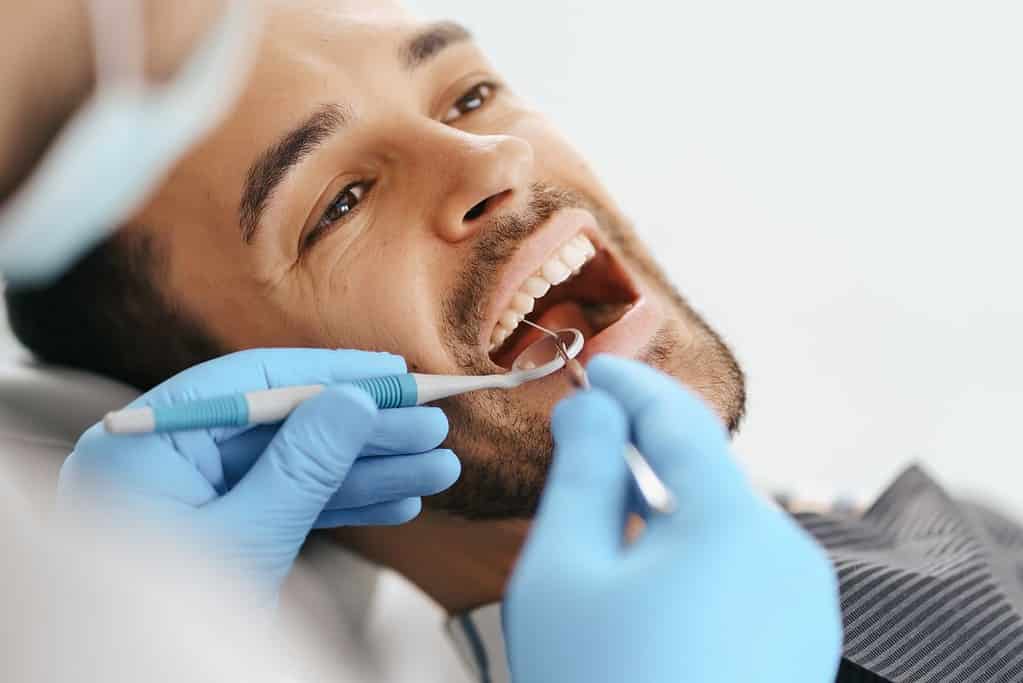
How Dentists Can Detect Vaping Habits
Dentists are trained professionals who can detect various signs and symptoms associated with different habits, including vaping. During dental checkups, dentists often examine the overall condition of a patient’s oral health to identify potential issues. While it may not always be straightforward, there are several factors that can indicate whether a person vapes.
One of the initial signs dentists may observe is the presence of nicotine stains on a person’s teeth. While vaping doesn’t produce the same type of stains as smoking, it can still discolor teeth due to the nicotine content in e-cigarettes. These stains can be detected during a dentist appointment, and the dentist may inquire about the patient’s habits based on their observations.
Another indication of vaping is the change in gum health. Studies have shown that switching from smoking to vaping can lead to improvements in gum health, specifically a reduction in bleeding. If a patient’s gum health has shown significant improvement between dental checkups, a dentist might suspect that the patient has switched from smoking to vaping.
Dry mouth, or xerostomia, is a common side effect of vaping. The presence of propylene glycol in e-liquids can cause oral dryness, which could further result in bad breath or difficulty swallowing. During a dental checkup, if the dentist observes symptoms consistent with dry mouth and the patient has no other underlying causes, vaping could be a possible reason.
While dentists can observe these signs and symptoms, it is essential for patients to be honest and upfront about their habits, including vaping. Providing accurate personal information can help the dentist tailor their advice and recommendations, ensuring that the patient receives the best possible care for their specific needs. Ultimately, staying transparent about vaping habits can contribute to better oral health and a more successful dentist appointment.

Comparing Vaping and Smoking
Vaping disposables and smoking are two different methods of consuming nicotine. While smoking involves burning tobacco and inhaling the smoke, vaping uses electronic devices that heat a liquid solution, creating vapor that a person inhales. Both activities deliver nicotine to the user, but they have different effects on oral health.
The negative impact of smoking on dental health is well-established. Smoking tobacco reduces blood flow to the gums, leading to periodontal diseases and tooth loss. It also causes bad breath and tooth discoloration, as well as increasing the risk of oral cancer1.
Vaping, on the other hand, is relatively new and thus, the long-term effects on oral health are not well-known. However, some studies have investigated the potential adverse effects of vaping. A pilot study found that switching from smoking to vaping led to an improvement in gum health, suggesting that vaping might be less harmful to the gums than smoking tobacco.
Another aspect to consider is the oral environment. While smoking tobacco produces an acidic environment that promotes tooth decay and gum disease, the erosive potential of vaping is less clear. A study on the erosive potential of vapes reported that the pH levels of e-liquids vary, but the overall potential for tooth erosion remained inconclusive.
In terms of social perception, vaping is often seen as less harmful than smoking. This is due to the fact that e-cigarettes do not produce the toxic chemicals and carcinogens found in tobacco smoke2. However, it is important to note that vaping is not risk-free, and more research is needed to determine the long-term effects on oral health as well as overall health.
While the evidence regarding the effects of vaping on oral health is still limited, it is clear that smoking tobacco has detrimental effects on dental health. In the meantime, it is crucial for dental health professionals to be aware of the potential risks associated with both smoking and vaping, and to offer guidance and resources to patients looking to reduce their nicotine consumption.
Tips for Maintaining Healthy Oral Hygiene
Maintaining good oral hygiene is essential for everyone, regardless of whether they vape or not. However, some studies have shown that vaping can have negative effects on oral health. Following these tips can help reduce the potential risks and maintain a healthy smile.
First and foremost, it is important to brush your teeth at least twice a day using a fluoride toothpaste. This helps to remove plaque, bacteria, and food particles that can cause tooth decay and gum disease. Use a soft-bristled toothbrush, and replace it every three months or sooner if the bristles are frayed.
Flossing daily is another crucial aspect of oral hygiene. Flossing helps to remove plaque and food particles from between the teeth and under the gumline, where a toothbrush cannot reach. Consider using a dental floss that is gentle on the gums to avoid irritation.
Incorporating mouthwash into your daily routine can also aid in good oral hygiene. Swishing with an antibacterial mouthwash can help kill the bacteria responsible for plaque and gum disease, and can also reduce bad breath. Be sure to select a mouthwash that is alcohol-free, as alcohol can cause dry mouth and worsen oral health problems.
Regular dental checkups are essential for maintaining oral health. Dentists can examine your teeth and gums, identify any issues, and provide recommendations for treatment or prevention. Additionally, professional cleanings can remove plaque and tartar buildup that cannot be removed through daily brushing and flossing. It is generally recommended to visit the dentist twice a year, but this may vary depending on individual oral health conditions.
In addition, a balanced diet and hydration can contribute to good oral hygiene. Consuming a diet rich in fruits, vegetables, and whole grains, and limiting sugary, acidic, or sticky foods can help prevent tooth decay and gum disease. Drinking plenty of water throughout the day can also help to keep the mouth clean and moist.
By following these tips and practicing good oral hygiene, individuals can minimize the potential risks associated with vaping and maintain a healthy smile.
Conclusion
Switching from smoking to vaping has been observed to cause a statistically significant increase in gingival bleeding, as mentioned in a pilot study. Dentists may detect this increase in gingival inflammation, which can suggest recent changes in oral habits.
Another study assessed the impact of smoking and vaping on the outcome of full-mouth ultrasonic scaling among patients with gingival inflammation. Dentists might take note of the patient’s history regarding the duration and daily frequency of smoking and vaping habits, thereby providing insights into the patient’s oral health condition.
Moreover, the erosive potential of popular vapes is a growing concern and has been linked to dental erosion. Although definitive conclusions require further investigation, dental professionals may be able to spot early signs of dental erosion in patients who vape.
In summary, while there are indications that dentists can detect certain signs related to vaping, it is important to understand that further research is needed to establish definitive connections. Patients should maintain open communication with their dental professionals regarding their vaping habits to ensure proper oral care and guidance.
References
In a pilot study examining the gingival response when smokers switch to vaping, it was found that there was a significant increase in bleeding on probing (BOP) and an increase in gingival crevicular fluid (GCF) volume after two weeks of vaping. However, the study design limits the ability to differentiate the effects of vaping from the cessation of smoking.
According to a letter published in the British Dental Journal, the nicotine concentration in an e-cigarette depends on its type and brand, which can potentially affect oral health. However, the direct relationship between vaping and dental health is not explicitly discussed.
While these sources provide some insight into potential oral health changes related to vaping, it’s essential to consider factors such as frequency and duration of vaping, oral hygiene practices, and the individual’s overall health. Further research is needed to determine if dentists can definitively tell if a patient vapes and the effects of vaping on oral health. Remember that maintaining a proper oral hygiene routine and visiting a dentist regularly are crucial for maintaining a healthy mouth.
Browse popular vape collections:
- Nicotine Disposables
- 2000 Puff Nicotine Disposable Vapes
- 2500 Puff Nicotine Disposable Vapes
- 5000 Puff Nicotine Disposable Vapes
- 6000 Puff Disposable Nicotine Vapes
- 7000 Puff Nicotine Disposable Vapes
- Disposable Vape Deals
- Best Vape Brands
- 8000 Puff Nicotine Disposable Vapes
- 9000 Puff Nicotine Disposable Vapes
- 5% Nicotine Disposable Vapes
- Rechargeable Nicotine Disposable Vapes
- Vape Coils
- Dab Wax Pens
- Dab Wax Pen Battery
- Yocan Vapes
- Vape Cases
Frequently Asked Questions
Can a dentist detect vaping during a checkup?
Dentists may not directly detect vaping during a checkup, but they can observe signs related to oral health issues caused by vaping. These signs may include dry mouth, irritated gums, or tooth decay. However, these symptoms are not exclusive to vaping and can result from other causes as well.
Do dentists inform parents about patients’ vaping habits?
Dentists can inform parents about potential signs of vaping-related oral health problems, but they cannot definitively confirm a patient’s vaping habits without the patient’s consent or disclosure. Nevertheless, it is crucial for both the patient and their parents to maintain open communication regarding overall health and lifestyle choices.
How does vaping affect oral health?
Vaping can have negative impacts on oral health, including dry mouth, irritated gums, and increased risk of tooth decay. The chemicals in e-liquids can also contribute to inflammation and gum disease.
Can vaping with braces lead to dental issues?
Vaping with braces may contribute to dental issues, as smoking or using tobacco products can hinder the treatment process. Apart from oral hygiene challenges, e-cigarette vapors might cause staining or damage to the dental materials used in braces. It is recommended to avoid vaping while undergoing orthodontic treatment to achieve the best results.
What signs do dentists look for to identify vaping?
Dentists may look for signs such as dry mouth, inflamed gums, or tooth decay, which might indicate vaping-related oral health issues. However, these observations cannot exclusively confirm a patient’s vaping habits as they could result from other causes as well.
How can one avoid dentists detecting smoking or vaping?
The best way to avoid dentists detecting smoking or vaping is to quit these habits, as they pose risks to oral health and overall well-being. Open communication with dental professionals is essential to ensure proper care and treatment for oral hygiene and health.
Footnotes




